Posts Tagged ‘Charles Debono’
-
A CURIOUS DISCOVERY
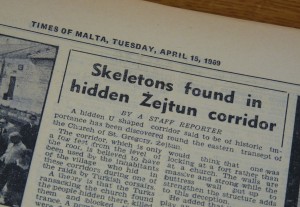 Skeletons found in hidden Żejtun corridor reported the Times of Malta on Tuesday, 15 April 1969. A photo of sacristan Ġann Marì Debono holding a skull in his hand accompanied the news of this remarkable discovery which up to this day is still shrouded in mystery and imbued with controversy.
Skeletons found in hidden Żejtun corridor reported the Times of Malta on Tuesday, 15 April 1969. A photo of sacristan Ġann Marì Debono holding a skull in his hand accompanied the news of this remarkable discovery which up to this day is still shrouded in mystery and imbued with controversy.I have been investigating and researching this find, often by interviewing persons who declared to have been involved in this discovery. My findings were discussed during a national symposium which was organized by Wirt iż-Żejtun in 2014 and later published in the book The Turkish Raid of 1614 which was issued by the same NGO.
 I never got the opportunity to talk to Ġann Marì Debono since he passed away in 2001, at the age of 78. Therefore, I accepted gladly the invitation of his eldest son Charles Debono who offered to share with me his father’s story.
I never got the opportunity to talk to Ġann Marì Debono since he passed away in 2001, at the age of 78. Therefore, I accepted gladly the invitation of his eldest son Charles Debono who offered to share with me his father’s story.“My grandmother had many children and so my father was brought up by his uncle Pawlu and his wife Beneditta Fenech. Pawlu was the sacristan of the parish church of St Catherine in Żejtun and he often took my father with him while he was at work. Soon, my father got very fond of this job and he gave a hand to his uncle whenever he could. Eventually, when Pawlu died, my father took over his duties and he became the new sacristan.”
Along the years, the old church of St Gregory which originally was the parish church of the village, had become neglected.
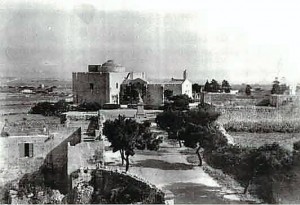 “There was nothing but a few farmhouses in the area. However, when a housing estate was built in proximity to this church, it made sense to revamp this building to provide service to the inhabitants who lived close by. Since my father was considering leaving his job at the parish church, Fr Ġwann Palmier, who was responsible for St Gregory’s church and also a friend of his, offered him a job there. Soon, my father was appointed as the sacristan of this church and together with Fr Palmier, they began to restore the place back to its glory.”
“There was nothing but a few farmhouses in the area. However, when a housing estate was built in proximity to this church, it made sense to revamp this building to provide service to the inhabitants who lived close by. Since my father was considering leaving his job at the parish church, Fr Ġwann Palmier, who was responsible for St Gregory’s church and also a friend of his, offered him a job there. Soon, my father was appointed as the sacristan of this church and together with Fr Palmier, they began to restore the place back to its glory.”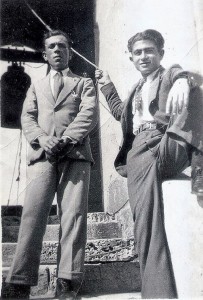 “My father was blessed with a curious nature and a strong determination. He had often listened to the rumours of the old villagers who insisted that there were some people that were buried around the dome of St Gregory’s church. He tried hard to locate this area, especially while doing maintenance work around the dome but he never succeeded.”
“My father was blessed with a curious nature and a strong determination. He had often listened to the rumours of the old villagers who insisted that there were some people that were buried around the dome of St Gregory’s church. He tried hard to locate this area, especially while doing maintenance work around the dome but he never succeeded.”Time would reveal that this was an impossible task since the human remains were actually buried around the roof and not around the dome.
“There was a raised stone close to the exit of the stairway’s room which led to the roof. My father often commented that it looked unusual and out of place. He was convinced that there was something beneath it. One day, there were some men doing maintenance work on the roof and he asked them to try to remove it.”
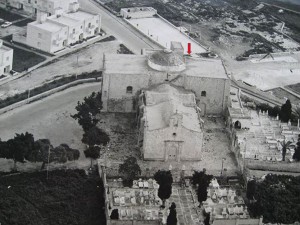 “Once the stone was removed, it was clear that it was covering an opening which led into the church. When my father entered into this space, he found his way to a small chamber which led to U-shaped passages that ran around the roof. Inside the corridors, he found several human remains. I remember him coming home on that day, full of excitement and telling us ‘I found them! I finally found them! I will take you to see them!’”
“Once the stone was removed, it was clear that it was covering an opening which led into the church. When my father entered into this space, he found his way to a small chamber which led to U-shaped passages that ran around the roof. Inside the corridors, he found several human remains. I remember him coming home on that day, full of excitement and telling us ‘I found them! I finally found them! I will take you to see them!’”When Charles visited the passages with his father, he noticed that the skeletons seemed to be lined up near each other along the corridors, as if someone had arranged them in that way. There was about 3 centimetres of dust which had collected in the corridors along the years during which the passages were blocked and closed away.
 Within this dust, a wooden shoe sole with a high heel, a small gilded wooden cross of Byzantine design, odd bits of a gilded wooden frame (perhaps an icon), three coins: two bronze with the cross of the Order, the other gold, but very worn out that it cannot be deciphered, pieces of pottery of the 16-17th century, fragments of animal bones, and a part of a chain mail armour vest, were discovered.
Within this dust, a wooden shoe sole with a high heel, a small gilded wooden cross of Byzantine design, odd bits of a gilded wooden frame (perhaps an icon), three coins: two bronze with the cross of the Order, the other gold, but very worn out that it cannot be deciphered, pieces of pottery of the 16-17th century, fragments of animal bones, and a part of a chain mail armour vest, were discovered.“My father found these passages in pitch darkness but soon he noticed that there were stones blocking five narrow loopholes in the thick walls. Once he removed these stones, he realized that three of them were pointing directly at St Thomas Bay and Marsascala while the other two looked out at Marsaxlokk and Birżebbuġa.”
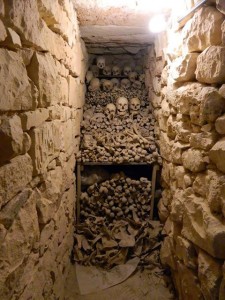 To avoid them being trodden, Debono picked up all the human bones and stacked them at the end of the third corridor. Yet the story does not end there….
To avoid them being trodden, Debono picked up all the human bones and stacked them at the end of the third corridor. Yet the story does not end there….“My father was sure that there was another entrance to these passages within the church itself. He pondered this idea and made several attempts to trace it out. Eventually he came upon a wall cupboard which was situated in an area along the winding staircase and seemed to be of no use. He decided to ask his friend Ġanni Vella, who was known as Ġanni l-ġgant (Ġanni the giant), to bring one of his mason’s tools; a huge iron nail with which building stones were kept in place. He knocked on the wall cupboard with this tool and suddenly, this feature moved out of the wall, revealing another entrance to these passages. It is from this entrance that people get in to view these passages nowadays.”
In 1978, paleopathological studies were done on these human remains by Seshadri Ramaswamy and Joseph Leslie Pace. These experts concluded that the bones appeared to have been exhumed from a cemetery and placed in the passages. However, others find this conclusion hard to believe and they insist that these remains possibly belong to a group of people who were trapped in these corridors whilst hiding there during an Ottoman attack on the village in 1614.
 Every Wednesday after Easter, the traditional feast of St Gregory is celebrated in this historical church in Żejtun. Probably few of those attending are aware of the secret passages and the human skeletons lying within.
Every Wednesday after Easter, the traditional feast of St Gregory is celebrated in this historical church in Żejtun. Probably few of those attending are aware of the secret passages and the human skeletons lying within.Considering that 49 years have passed from this discovery and that several scientific tools are now available to provide more conclusive results, including perhaps dna tests to trace family ancestry, isn’t it time to resolve this mystery by identifying who are these people and how they ended up in these passages?
(This feature was published in the Sunday Times of Malta issued on 25 March 2018)
-
Love in the time of war
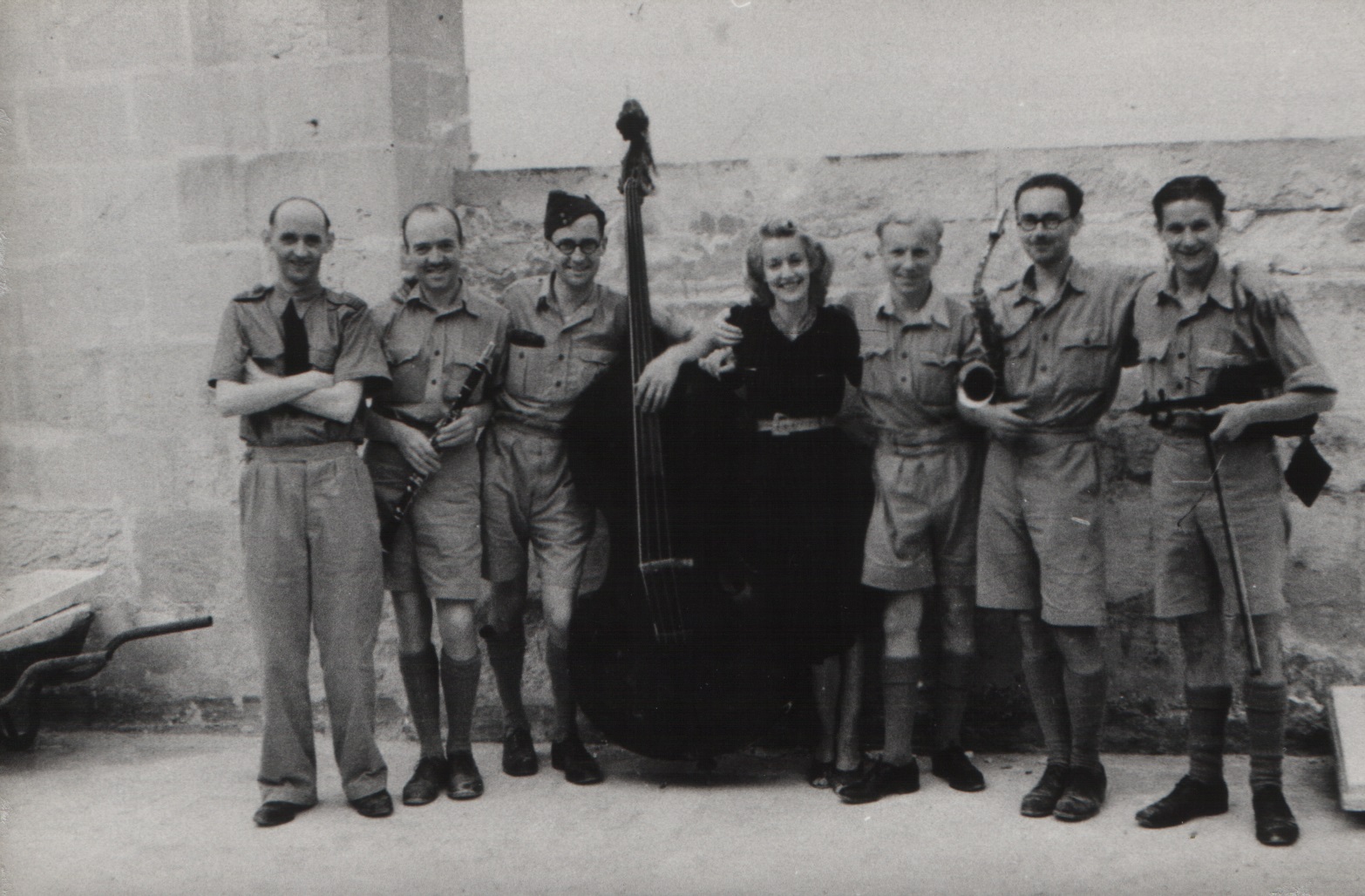
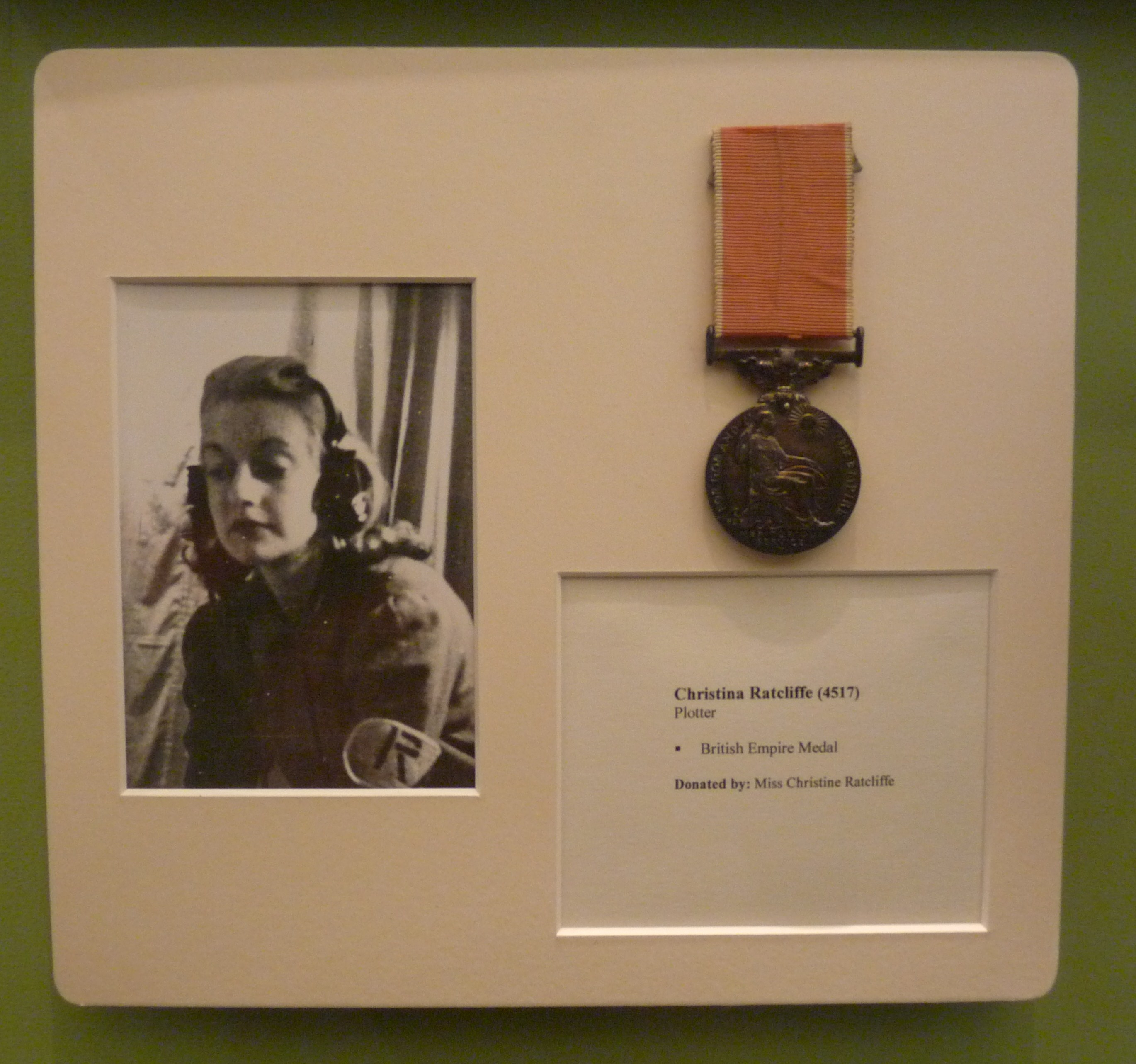
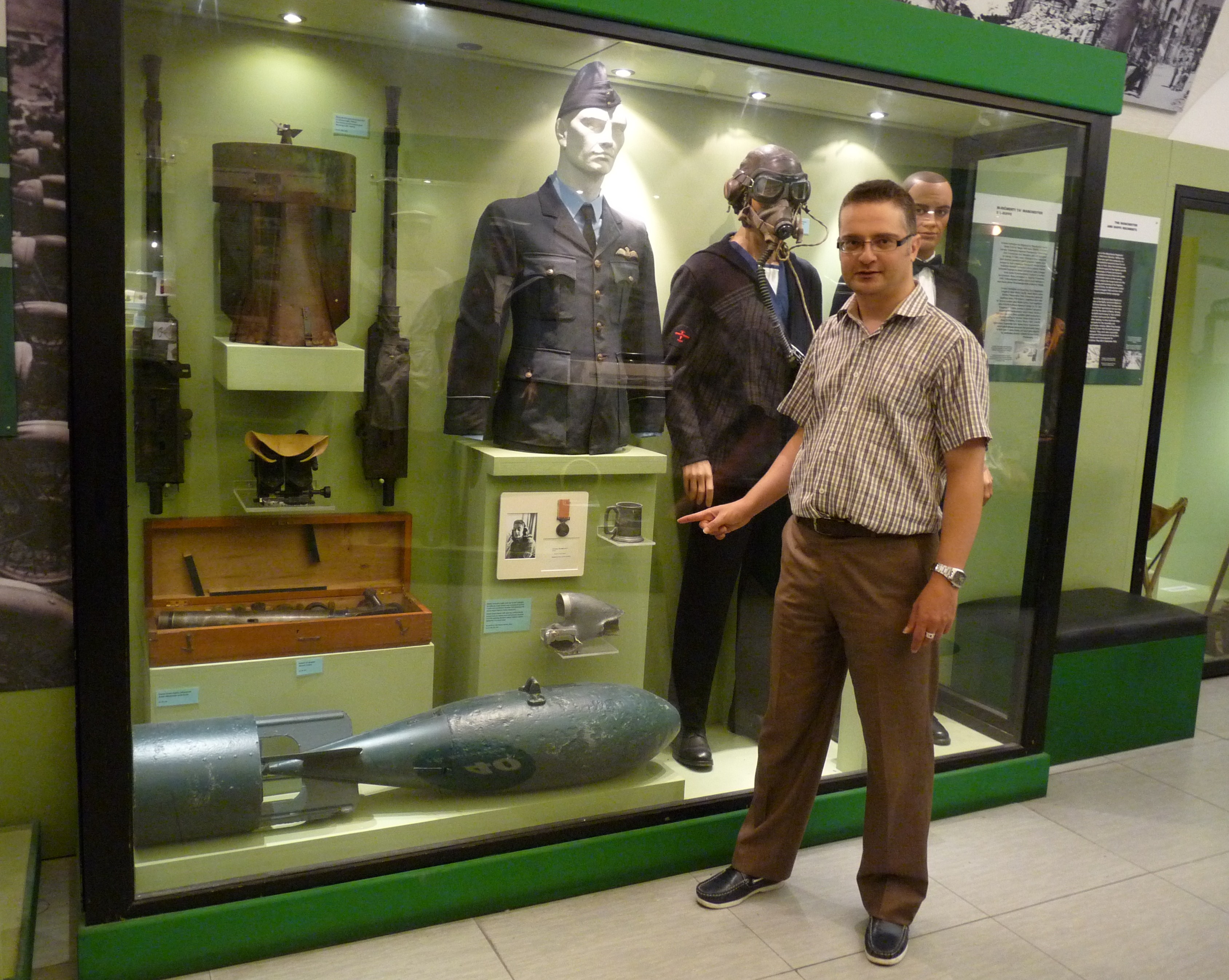
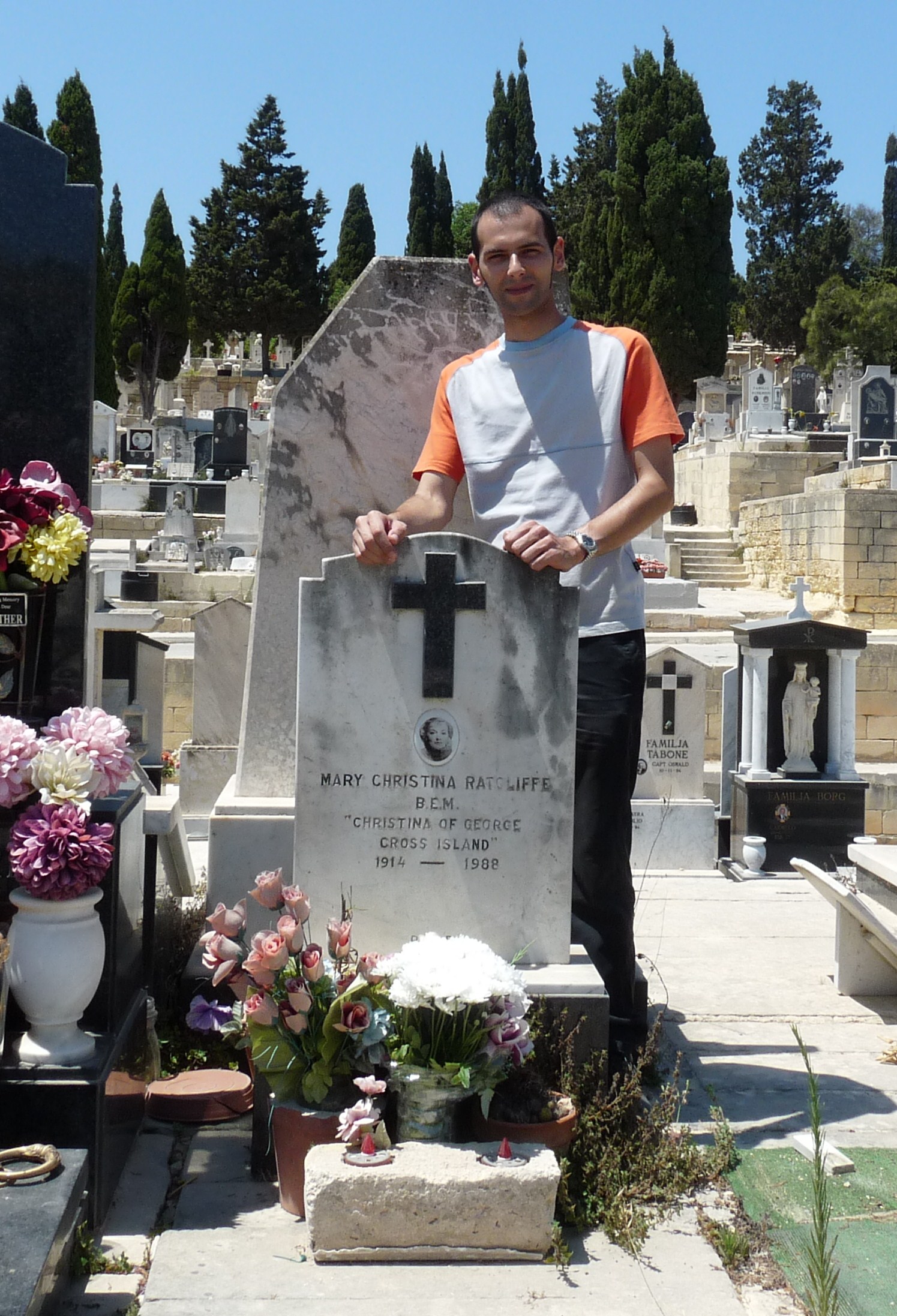
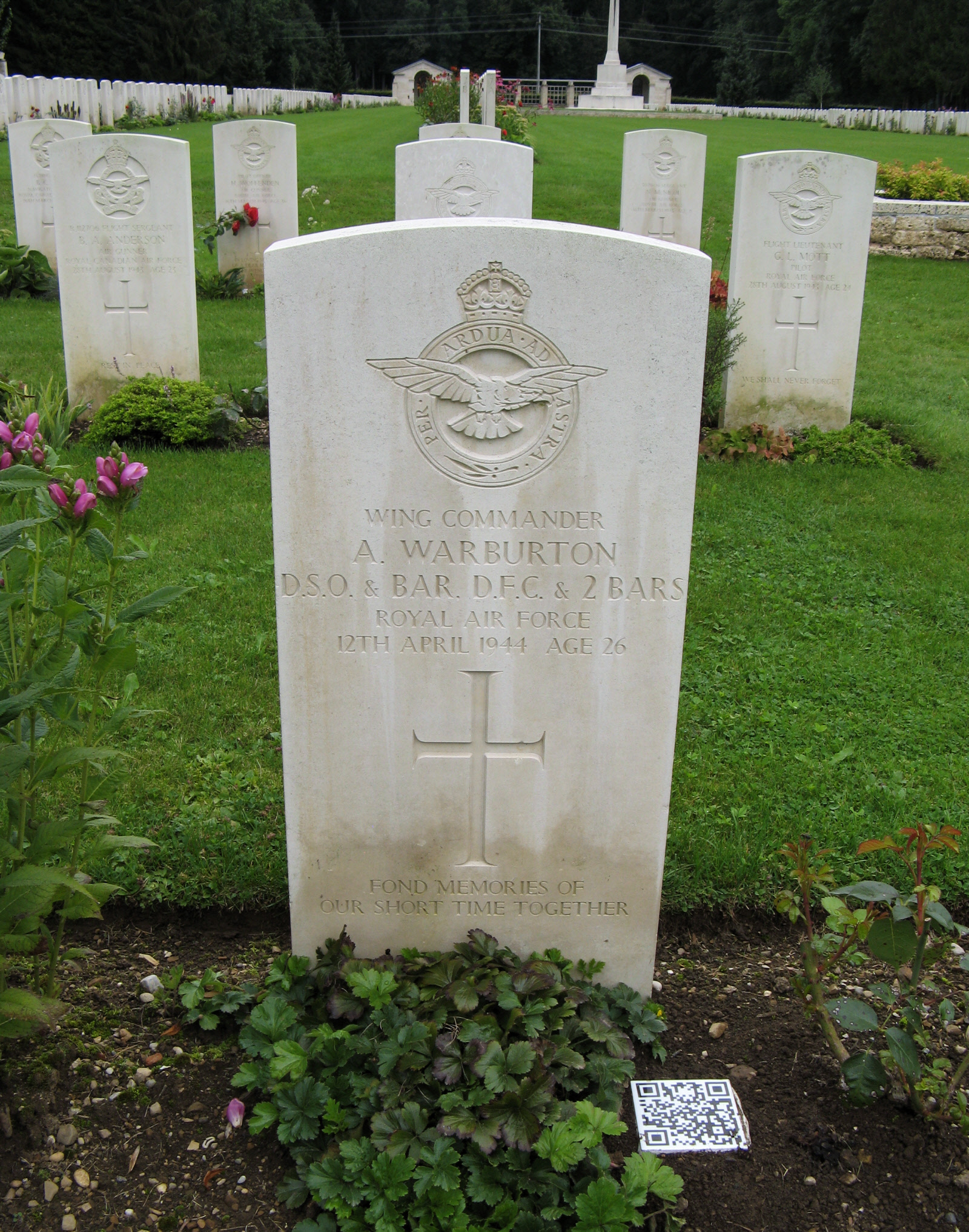
A century ago, many countries had to deal with the onset of World War I which was supposed to be the war to end all wars. Yet, a few years later, the reality of World War II ravaged again many people’s lives, as it devastated their motherland, their homes and their existence.
Today, these poignant episodes are recorded in various museums around the world, including the National War Museum in Valletta, wherein one finds several objects which recall these dark periods. However a visit to this museum will reveal that its exhibits are witness to more than that, since they also display how people confronted and survived these crucial moments, and how the ugliness of war never stopped their urge to live and to love.
During a recent visit to this museum wherein I was accompanied by Curator Charles Debono, I discovered how five particular items – a British Empire Medal, an RAF side cap, a uniform jacket, a tankard won at a sports event, and part of a manifold of a P38 Lightning aircraft – formed part of a fantastic narrative relating to a famous English couple who met in Malta and were united and separated by war. Indeed, as I followed the story of the legendary Wg Cdr Adrian Warburton and his lover Christina Ratcliffe, I was whirled back in the 1940s; a time when both the Maltese islands and their inhabitants were pushed to their limits and heroes were borne.
Adrian Warburton was born in Middlesborough on March, 10, 1918, but his father Geoffrey, a young submarine commander who had been awarded the prestigious Distinguished Service Order, decided to christen him in a submarine which was berthed in Malta. Apparently, a good number of Warburton’s family members were renowned for their eccentric behaviour, particularly where war was concerned, and as Tony Spooner said in his book Warburton’s War, “DSO’s were fairly commonplace in the family”.
In fact, during his brief life, even Adrian received this honour twice: one of which was awarded to him for his bravery when flying very low among the Italian battleships and cruisers in Taranto in order to read their names, after the cameras failed to work during a reconnaissance mission. This information enabled the Fleet Air Arm to dispatch an effective attack on the enemy later on that night.
Interestingly, during his training to become a pilot, Adrian had failed to impress his seniors and even though he eventually succeeded to pass his trials, his general assessment was deemed below average. Probably, besides his dare-devil acts, this was also the reason why he crashed his planes during some of his missions. Presumably, this was also the motive for the disbelief that he was dead, after he went missing during his last flight in 1944 …It was on September, 6, 1940 that Warburton arrived in Luqa airfield after he was transferred on duty to Malta. Soon he distinguished himself for his fearless attitude such as when he and his two crewmen shot down an Italian Z.506B seaplane when they were only expected to shoot some photos.
His love story with Christina Ratcliffe took place after she was stranded in Malta, when Italy declared war on Britain and France on 10th June 1940. She had come to our islands together with her group in order to perform as a cabaret dancer but when they found themselves unemployed, these artists set up an ensemble which they called the Whizz Bangs and provided entertainment for the troops.
During her stay on the island, Ratcliffe made friends with a French pilot, Jacques Mehouas, who often spoke to her about Warburton and described him as a brave and formidable British pilot. Ironically, it was his death which brought them together, when Warburton, who was also a friend of his, approached her to give her his condolences. Ratcliffe considered this first encounter as love at first sight since in her later writings she admitted that with his golden hair and his beautiful blue eyes, Warburton resembled a Greek god.
In 1939 Warburton had married Eileen Mitchell after a very brief courtship but allegedly he had left her at once when he found out that she was divorced and had a child. However in Ratcliffe, he discovered a soul mate and soon they became one of the most renowned couples at the time. Like the British pilot, she was beautiful, charismatic and adventurous and as Spooner described them “With their personalities, zest and determination, they were to become living symbols of the island’s unconquerable spirit.”
In fact, besides working as an entertainer, after some time, Christina volunteered to work with the RAF as a telephonist and later as a plotter at the underground War Headquarters in Valletta. She was eventually appointed Captain of D Watch and then became assistant to the Controller, thus having to abandon the Whizz Bangs group.
This love story came to an abrupt end when on April 12, 1944, Warburton was sent on a reconnaissance mission during which he was supposed to take some photos over Germany, but he never returned. At first his disappearance was not given much importance because workmates, friends and even Ratcliffe were expecting him to return like he always did before. Yet by time, this matter became riddled with speculation as people started to question whether he had committed suicide or whether he had simply left his girlfriend and started a new affair.
After this incident, Ratcliffe changed drastically. Her neighbours recall that she became a recluse, preferring to live in isolation in her apartment at 7/3, Vilhena Terrace, Vilhena Street, Floriana, and forever waiting for her Warby to return to her. In his book Women of Malta, Frederick R Galea, states that “her last few years were unhappy ones, trying to drown her loneliness in alcohol; she became withdrawn and impoverished.” Certainly this was a pitiful end to a woman who in 1943 was awarded the British Empire Medal in recognition of her work during World War II. During her lifetime, Ratcliffe donated this medal together with the uniform and the tankard which belonged to her beloved Warburton, to the National War Museum in Valletta.
It was finally in 2002 when Warburton’s fate was identified, after Frank Dorber, a Welsh aviation researcher, discovered his remains in the cockpit of his wrecked plane, buried about two metres deep in a field near the Bavarian village of Egling an der Paar, 34 miles west of Munich. An examination of his aircraft showed that one of the propellers had bullet holes in it, thus indicating that Warburton had been shot down. Part of this plane was donated to the National War Museum in Valletta and now forms part of the exhibits which reflect this story.
Meanwhile, according to Commonwealth regulations, Warburton was given a formal funeral on May 14, 2003 and he was buried at the Durnbach Commonwealth War Cemetery. Curiously, this ceremony was attended also by his wife Eileen whom many believed to have been dead. After Warburton was found and buried, many sympathizers of the couple Warburton – Ratcliffe demanded whether it was time for these two lovers to be re-united, even if after death? But where is Ratcliffe?
A visit to the Addolorata cemetery in Paola where I was accompanied by Eman Bonnici, who is the cemetery’s assistant librarian and a researcher of this site, led me to the resting place of ‘Christina of George Cross Island’. He explained to me that the cemetery’s records show that Ratcliffe was originally buried in the common area of the Commonwealth section in 1988. According to a grave-digger from Floriana, Ratcliffe had become so poor that the neighbours had collected the necessary funds to provide her with a proper burial. Then, in 1991, an individual bearing the surname Ratcliffe, bought a grave for her so that her remains will not be lost in the common ossuary. This grave, marked no. 4, is situated in the East Division, Section MA-D. Bonnici informed me that Ratcliffe’s grave is regularly visited by foreigners, particularly from England and Scotland, who come to this cemetery in order to pay their tribute to a heroine of such a turbulent but fascinating love affair.
(This article was published in ‘Man Matters’ Supplement in The Times of Malta dated 20th September 2014)
Travelogue
Archives
| M | T | W | T | F | S | S |
|---|---|---|---|---|---|---|
| « Jan | ||||||
| 1 | 2 | 3 | 4 | 5 | 6 | 7 |
| 8 | 9 | 10 | 11 | 12 | 13 | 14 |
| 15 | 16 | 17 | 18 | 19 | 20 | 21 |
| 22 | 23 | 24 | 25 | 26 | 27 | 28 |
| 29 | 30 | |||||
Recent Posts
- A MATTER OF FATE
- MALTA’S PREHISTORIC TREASURES
- THE MAGIC IS IN THE DETAIL
- THE SELLING GAME
- NEVER FORGOTTEN
- Ġrajjiet mhux mitmuma – 35 sena mit-Traġedja tal-Patrol Boat C23
- AN UNEXPECTED VISIT
- THE SISTERS OF THE CRIB
Comments
- Pauline Harkins on Novella – Li kieku stajt!
- admin on IL-KARNIVAL TRAĠIKU TAL-1823
- Albert on IL-KARNIVAL TRAĠIKU TAL-1823
- Martin Ratcliffe on Love in the time of war
- admin on 24 SENA ILU: IT-TRAĠEDJA TAL-PATROL BOAT C23